Steve Jackson Games has unveiled its first product aimed to include players of single-digit age — six and up: Munchkin Treasure Hunt. GeekDad received one of a very few advance review copies, and now that we’ve played a few games, we’ve got good news for Munchkin fans with young kids: it’s really fun.
What you get:
- A 16-by-16-inch game board (folds into quarters)
- 26 Monster cards (plus two blanks for customizing)
- 70 Treasure cards (plus two blanks for customizing)
- Six player Munchkin tokens made up of a plastic base and cardboard “standie”
- Two six-sided dice
Game artwork is by John Kovalic, and the game design comes from Munchkin Czar Andrew Hackard.
How to play:
Everybody starts in the Entrance room in the center of the board and receives three Treasure cards, which they keep to themselves.
A player’s turn begins with rolling one die and moving in any direction. Land on a picture of a die? Roll again. Land on a treasure chest? Free Treasure card! Land on a picture of a Monster? Move to that Monster’s room for a fight. Land on a blank space? Enjoy the tranquility!
If your move takes you into a room, you stop there immediately and either fight the monster or, if it’s the Entrance, follow its instructions: take a Treasure, roll one die, and refer to the Entrance’s numbered illustrations to move to the room of the monster matching the number you rolled. (And then fight the monster when you get there.)
Fighting monsters:
Monster fights use a simplified, younger-kid-friendly version of the system at the heart of Munchkin: Each monster has a target Power number, and you’re trying to match or beat it. (Unlike Munchkin, ties in Munchkin Treasure Hunt go to the player.)
There are six Monsters in Munchkin Treasure Hunt: Ghost, Witch, Troll, Zombie, Goblin, and Dragon. Each has a base Power number ranging from 5 to 12. When you fight, you draw a Monster card, which will describe the specific sort of monster you’re fighting: Big-eared, for instance; or Violent; or Snotty. (Dragons are powerful — you have to draw two descriptive Monster cards when you’re in the dragon room.) And not all Monster cards actually add a bonus — there are several “+0 to Monster” cards, although there are no negative point cards.
You determine the monster’s power by adding its base power number to the number(s) on the monster card(s) you drew. The dragon has a Power of 12, so — check the cards in the photo for reference — a Big-Eared, Snotty Dragon would have a power of 15 (12+1+2). The Troll also has a special power-determining rule: Its base number is modified by one Monster card and a single die roll.
To defeat a monster, you start by rolling one die, which is your Munchkin’s Power. It’s possible to beat a monster on the strength of this die roll alone if you’re fighting a Witch or a Goblin. More often, though, you’ll need to use some of your Treasures to reach the Monster’s Power number.
Treasures come in two kinds: permanent and one-time. One-time Treasures are discarded after use, and most either add to your power or allow you to help out your die roll with another die, or a re-roll. Permanent treasures are played on the table in front of you, and their bonuses remain active until you lose them or swap them out. You can only have two permanent treasures at a time though, so if you’ve got two on the table and want to upgrade, you’ll have to discard one that you’re using. (Each Treasure has a Gold value printed in the lower right corner as well. Pay attention to these.)
If you can beat the monster by using your cards, you get to draw the number of Treasures shown in the room, which ranges from 2 to 5, and you get to keep them to yourself. The Monster card and all one-time Treasure cards you used in the fight go into their respective discard piles.
Can’t beat the monster with your cards? You have two options: run away or get help.
Running away means simply rolling one die and moving away from the room, but if you have any permanent treasures on the table, you have to discard one. No permanent treasures? Lose a card from your hand instead.
You can get help from one — and only one — other player by asking someone who is within six spaces of you for help. (No “hallway” is more than five spaces long, so basically this works out to an effective range of one room in any direction.) If that person agrees, they move to your room. Assistance begins with that person rolling a die and adding any permanent Treasure bonuses they have. If that number, combined with yours, still doesn’t beat the Monster, they can play one-time Treasures if they want.
If your team-up efforts are successful, you draw the number of Treasures in the room, but you reveal them face-up to everyone, and your helper gets to choose one. If you can’t beat the monster together, and must Run Away, your helper does not — so there’s no penalty for trying to assist someone if your effort fails.
Who wins?
The game ends when the last Treasure card is drawn. (If a player is due more cards than remain, the Treasure discard deck is shuffled so they can draw the rest of the cards they deserve.)
Everyone then adds up the Gold values of the Treasures in their hand — permanent Treasures on the table don’t count! — and the winner is the one with the most gold.
Play time is estimated at an hour, and our four- and five-player games clocked in right around that.
The verdict:
For every parent who’s ever asked “How long until I can teach my kid Munchkin?” Treasure Hunt is the perfect answer. It also stands just fine on its own, even if your kids never want to tackle the original card game.
It succeeds for a few reasons. First, it’s not just Munchkin on a game board. Treasure Hunt captures Munchkin‘s humor and game style — nothing like defeating a dark and stormy boring dragon using your homework binder and a full diaper — but plays differently, lacking the cutthroat aspects of leveling up at all costs and negatively interfering with another player’s combat. The worst you can do is decline to help someone fight a monster, which, at most, will cost that player a single Treasure card.
It’s also easy enough to learn and play that after one game, my seven- and nine-year-old nephews were easily prepared to play again with little or no help. (Also: Since introducing them to the game, they have replaced their traditional “Hi, Uncle John!” greeting with “Did you bring the Treasure Hunt game?” Which is fine, of course.)
That said, my brother and I did give his kids advice now and then, because while the math itself is basic, Munchkin Treasure Hunt allows for a good amount of strategy in determining which monsters you’d like pursue — Is it worth taking on a five-treasure fight if you need to play three treasures to win, for example? — which Treasures to play and which to keep for their gold, when to use dice re-rolls, and things like that.
My only issue with the game components is that one or two of the plastic bases for the player pieces didn’t grip the “standie” firmly enough, so if we picked up those pieces rather than scooting them along the board, the base dropped off. Since there’s no reason for these not to remain permanently assembled, I went ahead and put a tiny dab of school glue in each base. And as with all Munchkin games, you’ll probably want to throw a couple rubber bands in the box to keep the card decks separate.
Munchkin Treasure Hunt will retail for $29.99 and be on shelves soon exclusively at Toys ‘R’ Us stores and online at toysrus.com.
GeekDad received a copy of this game for review purposes.
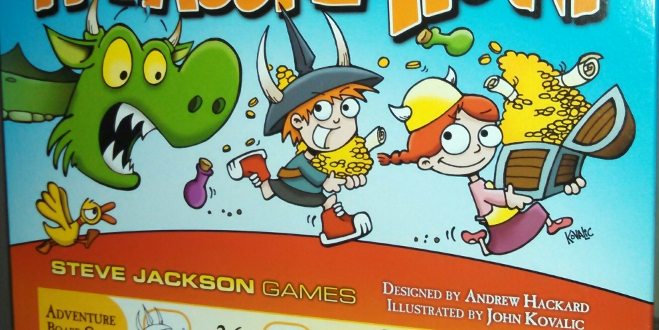
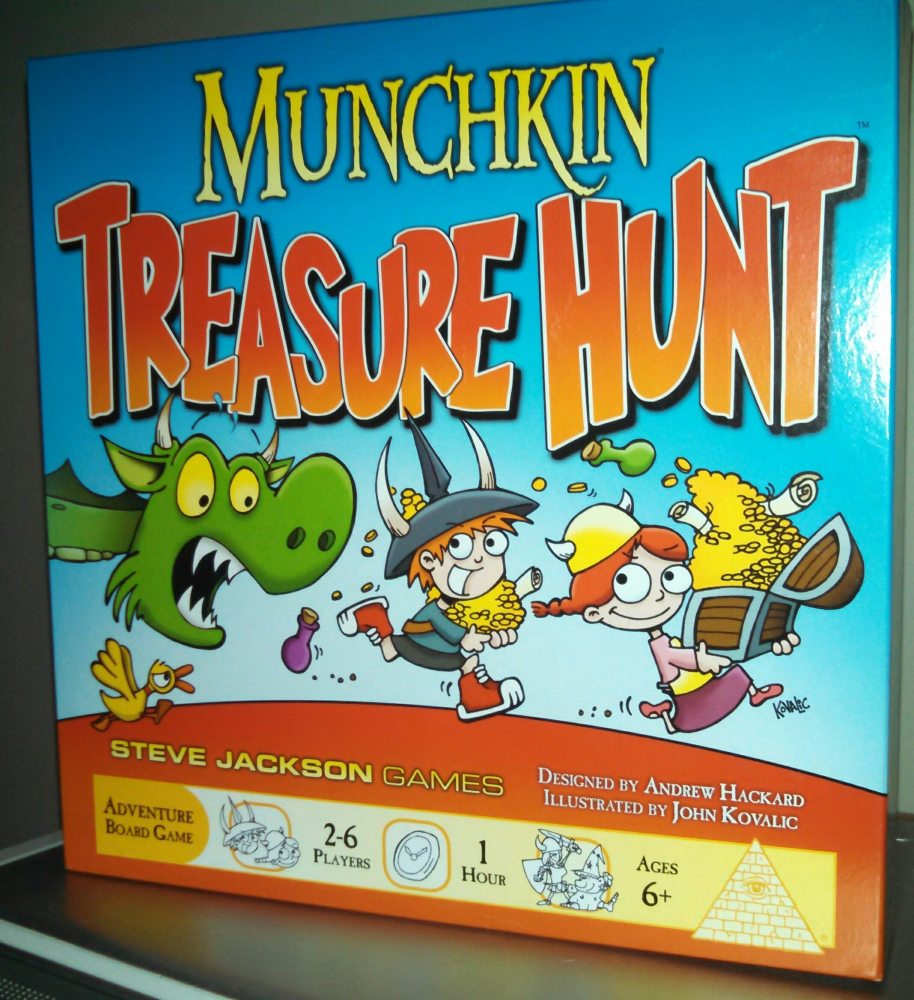
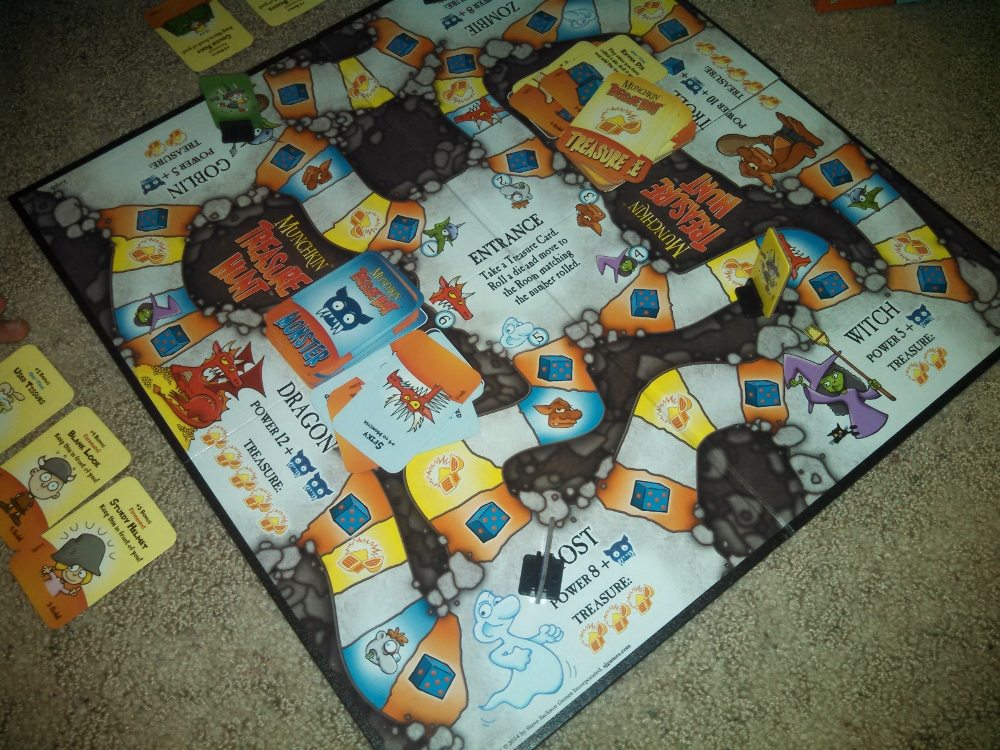
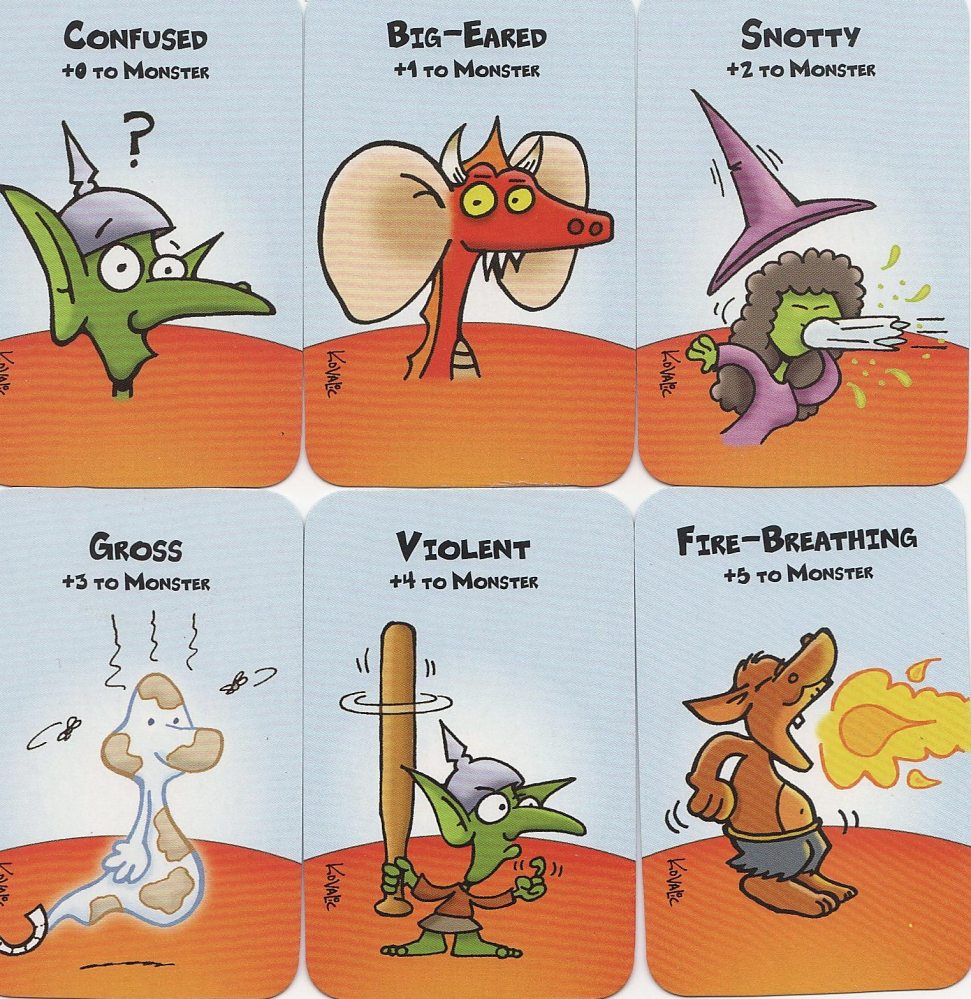

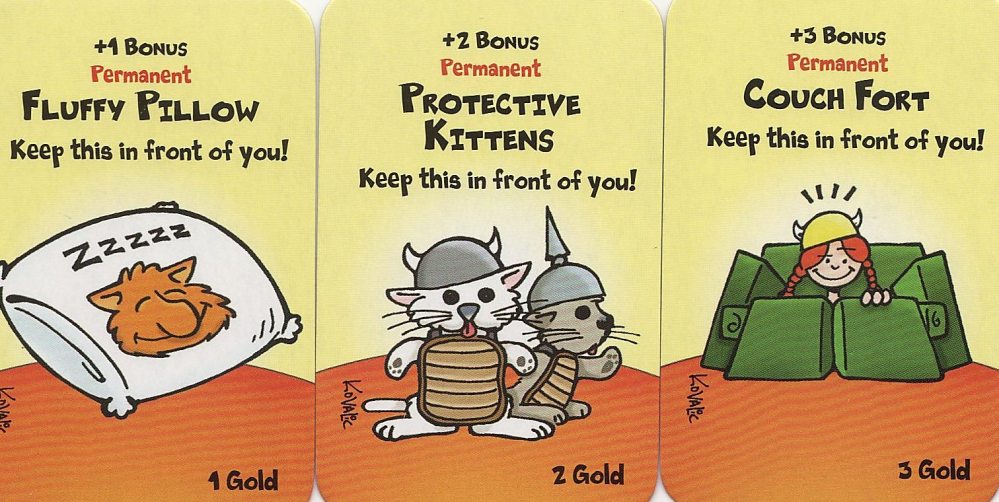

This looks interesting to me, but not because of the age aspect. I mostly play board games with the wife, and as such we are always looking for good two player games. Original Munchkin is 3+. Would you recommend this game for us? Or are there other Munchkin-esque games better suited for two adults? I think we would actually enjoy something that is simple and easy to get into, which probably helps with games aimed at kids. Thanks for the review 🙂
Interesting question. I haven’t played a two-person game of Treasure Hunt, so I can’t say for certain whether it drastically changes the feel of the game. However, I can say that while the traditional Munchkin card games do recommend three players, my daughter and I have enjoyed plenty of two-player Munchkin over the years. (Until you mentioned it, I never even realized it was a 3-player-minimum recommendation.) If the two of you are interested in trying Munchkin, I’d probably go ahead and dive into one of the versions of the original card game, since it’s more complex.
Any idea if the exclusivity is upheld across the 49th parallel (a lot of game exclusivity agreements do not). I’d be curious where I can pick this up in Canada
Previous “exclusive” game distribution arrangements by SJG lasted for 6-12 months before the games became more widely available. It may just be a matter of waiting.
This is available at Toys R Us now. picked it up last night and had a lot of fun playing with my wife and 8yo.
Got this game last night to play with the 8 year old! Awesome! So much fun and lasted the perfect amount of time. Better than having to simplify regular Munchkin so he doesn’t get killed.